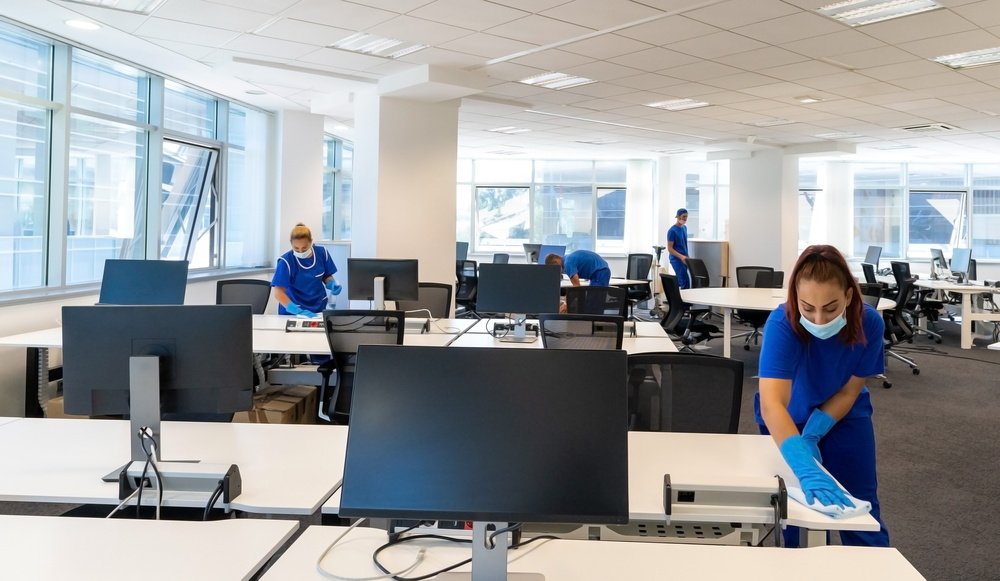Daily and weekly cleaning keeps the typical office in pretty good shape. But even the cleanest offices have deep cleaning needs. Every once in a while, you just need to move things out of the way and clean as deeply as possible. Fortunately, deep cleaning doesn’t have to be terribly disruptive.
Below are some of the most common best practices for office deep cleaning. Service providers in our industry utilize them to ensure that clients are happy with the finished product. If you would like to know more about how All Pro Cleaning Systems manages clients’ deep clean needs, just ask. We would be happy to help you figure out the best way to deep clean your facility.
1. A Comprehensive Cleaning Schedule
Getting a handle on deep cleaning needs begins with the development of a comprehensive cleaning schedule. Among other things, a cleaning schedule helps define what constitutes deep cleaning as opposed to daily, weekly, and monthly cleaning. Remember that all facilities are unique in some way.
With a schedule in hand, deep cleaning tasks can be prioritized and put on the calendar. Some of them will be addressed quarterly or semi-annually. Other tasks might be more suitable for annual completion.
2. Prioritize Decluttering
By its nature, deep cleaning is more comprehensive than daily and weekly cleaning. Take carpets. They might be vacuumed nightly and spot cleaned when someone spills coffee. Routine cleaning isn’t a big deal. But when it is time to deep clean the carpets, things have to be moved. Clutter only makes the job more difficult.
Decluttering is the precursor to deep cleaning. Anything that can be moved in advance of the cleaning crew coming in should be moved. Everything that doesn’t have a place should be given one. The less moving cleaning crews need to do, the more time and effort they can focus on actually cleaning the carpets.
3. Cleaning High-Touch Surfaces
Deep cleaning high-touch surfaces tends to be a more regular task. It might not be a daily task, but it could be something you want cleaning crews to do on a weekly basis. The key to cleaning high-touch surfaces is the chosen cleaning solution. Deep cleaning requires an appropriate disinfectant used according to recommended contact times.
Training is critically important where sanitizing and disinfecting are concerned. So for deep cleaning a medical office, you would want highly skilled cleaners who have been properly trained in disinfecting high-touch surfaces.
4. General Cleaner Training
Deep cleaning often requires equipment and cleaning solutions that crews don’t use every day. Therefore, making sure team members are properly trained in deep cleaning techniques and equipment is a smart move. Trusting deep cleaning to improperly trained team members could result in a poor-quality finished product.
5. Hard-to-Reach Areas
Deep cleaning often includes hard-to-reach areas that don’t normally get a lot of attention. Such areas include things like vents, ledges, and the upper areas of shelves and filing cabinets. Light fixtures and ceiling fans are additional hard-to-reach areas.
These areas may require an extra bit of care or delicacy. If there are ways to clean such surfaces from the floor – without the need for ladders and step stools – all the better. Otherwise, proper care should be taken when working at height.
There are other best practices that we will cover at a later date. The point to remember is that deep cleaning is more involved than daily and weekly cleaning. It requires more effort, different cleaning solutions, and even specialized equipment. Deep cleaning needs are good motivation to turn all your office cleaning over to a business cleaning service.


